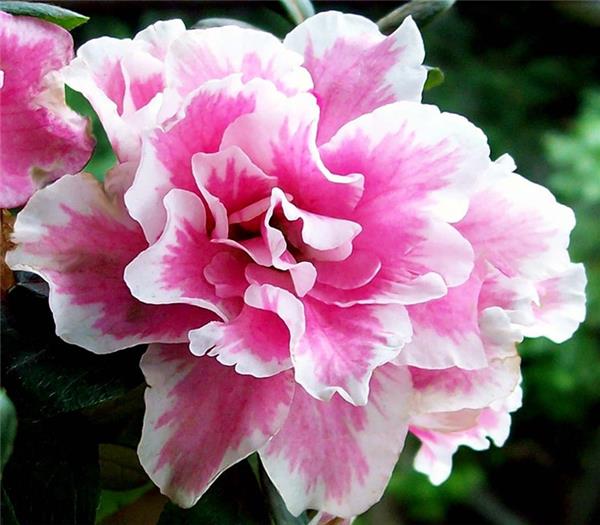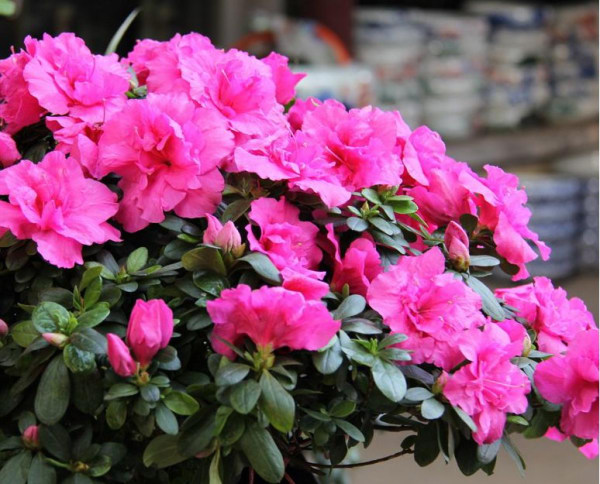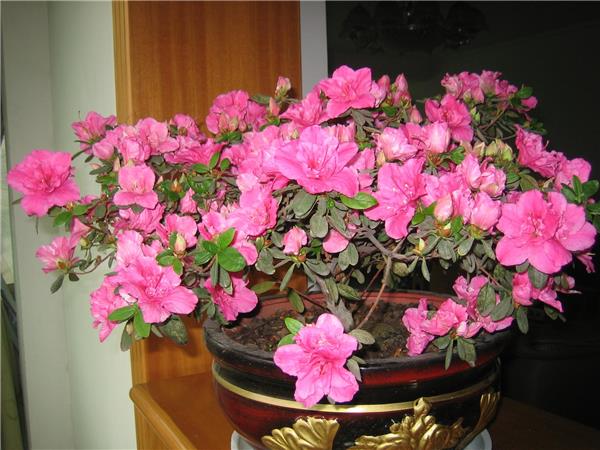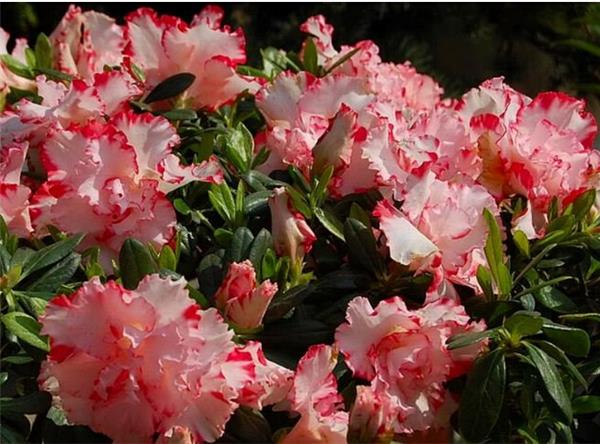Eight Points for Attention in Preventing Leaf Dropping of Western Cuckoo
Many friends have encountered the phenomenon of leaf shedding in the process of cultivating rhododendron. Let's introduce eight main points for attention to prevent the leaf shedding of rhododendron.

1. Cuckoo and other southern flowers mostly like acidic soil, such as long-term use of high alkaline soil cultivation will cause leaves dry tip, yellowing and even death. Rotten leaf soil, pine needle soil, peat soil or ferrous sulfate and sulfur powder can be used to improve soil.
two。 Pay attention to ventilation. Potted rhododendron should be placed in the balcony, windowsill, platform with good ventilation or outdoor ventilation, or in the ventilated high place such as patio and courtyard, and must not be placed in a stuffy and unventilated place, but also in indoor or closed balcony. Otherwise, the plant will have yellow leaves and fallen leaves, or even die.
3. Be careful to avoid light properly. Rhododendrons need sunlight or scattered light, but to avoid more than 35 ℃ of hot sun exposure, pay attention to proper shading around noon.
4. Water quality. Most areas in the north contain high salinity in groundwater, so it is best to use Rain Water or snow water to water flowers. If river water and well water are used, 0.2% ferrous sulfate should be added to the water to improve the quality of the water. Do not use alkaline water to water the flowers, otherwise the rhododendron will suffer from chlorosis due to alkaline iron deficiency in the basin soil and cause defoliation. If tap water is used, it should be stored for one day before taking it. The water temperature should be close to the soil temperature.

5. Water it correctly. Watering is a regular maintenance work, the roots of western cuckoos are very slender, which are not only afraid of waterlogging, but also not resistant to drought, so improper watering can easily cause plant leaves to fall off. Watering must be carried out according to seasons, weather changes and the needs of different stages of plant growth and development. General winter dormancy period can be watered once 3-5 days; spring plant growth is exuberant, the weather is hot, evaporation is large, basin soil should be irrigated when it is dry, and water should often be sprayed to the ground and plant leaves to facilitate cooling; when the autumn weather is fine, the basin soil should always be kept moist, and the temperature can be reduced according to the situation after watering.
6. Keep the temperature against the cold. Most flowers in the south like warmth and are afraid of the cold. During the growth period, it is easy to suffer from low temperature below 0C, so general flowers should be moved into indoor maintenance before Frosts Descent. The room temperature in winter should be treated differently according to the temperature preference of different flowers. For Milan, poinsettia, paulownia, bamboo begonia and other flowers that like high temperature, they should not be less than 12C, while those who like medium temperature, such as white orchid, jasmine and Fusang, should not be lower than 5C. The low temperature tolerant sweet-scented osmanthus, kumquat, generation and so on are not less than 0C. Spring should not leave the room too early, so as not to suffer from late frost and cold wind.

7. adequate manuring. Fertilization is mainly based on rotten organic fertilizer, supplemented by chemical fertilizer. Thin pancake fertilizer and water can be applied every 7 to 10 days during the growing season. When 0.2% potassium dihydrogen phosphate solution was sprayed twice during the bud period, the flower color was bright and the florescence was long. Stop fertilizing in summer, winter and flowering. However, do not apply concentrated fertilizer and raw fertilizer that has not been fermented. The application of liquid fertilizer mainly composed of phosphorus and potassium fertilizer twice after flower shedding promotes the plant growth and is beneficial to flower bud differentiation.
8. Correct pruning: 2-year-old 4-year-old plants, select coring to promote branches, steep long branches can be picked several times, weak branches and transverse branches should be cut off, and leaves of lower outward buds should be retained; formed plants should only be thinning and pruning irregular branches, weak branches and diseased branches should be cut off at any time, not strong pruning. The new buds of rhododendron mostly occur at the tip of branches, and the germination rate of branches is very low every other year, so the strongly pruned plants can not germinate for a long time. The room temperature can be adjusted to 10 Mel 20 degrees, the air humidity is 60% 80%, the basin soil is moist but not wet, and frequently spray or spray fine water on the cultivated ground and branches, it is still expected to partially sprout, but the incidence of new buds will not be too high, and the plant type will not be very good in 3 years.

Well, this is the end of the introduction on how to prevent the leaf shedding of the western cuckoo. Generally speaking, as long as we pay attention to the above eight items, especially the links of soil, fertilizer, water and light, the western cuckoo will not have the phenomenon of falling leaves. It's beautiful and healthy.
- Prev

Methods of potted banana flowers and ground-grown banana flowers
Methods of potted banana flowers and ground-grown banana flowers
- Next

Detailed Analysis of Medicinal value and Culture methods of Caryophyllum chinense
Detailed Analysis of Medicinal value and Culture methods of Caryophyllum chinense
Related
- Wuhan Hospital Iron Tree Blooming Result Was Instantly Frightened by the Gardener Master
- Which variety of camellia is the most fragrant and best? Which one do you like best?
- What is the small blue coat, the breeding methods and matters needing attention of the succulent plant
- Dormancy time and maintenance management of succulent plants during dormancy
- Minas succulent how to raise, Minas succulent plant pictures
- What are the varieties of winter succulent plants
- How to raise succulent plants in twelve rolls? let's take a look at some experience of breeding twelve rolls.
- Attention should be paid to water control for succulent plants during dormant period (winter and summer)
- Watering experience of twelve rolls of succulent plants
- Techniques for fertilizing succulent plants. An article will let you know how to fertilize succulent plants.

